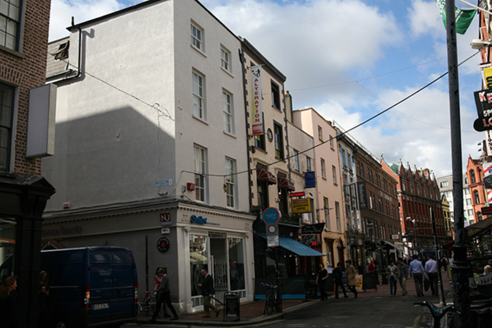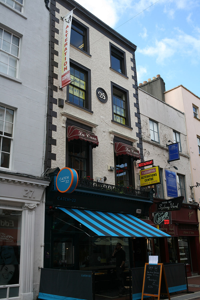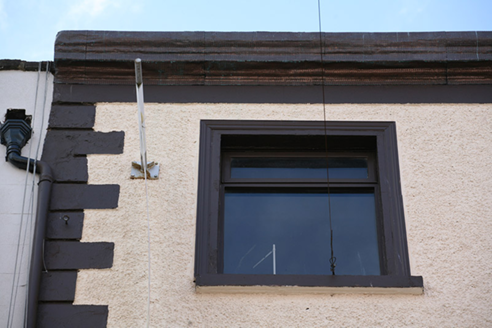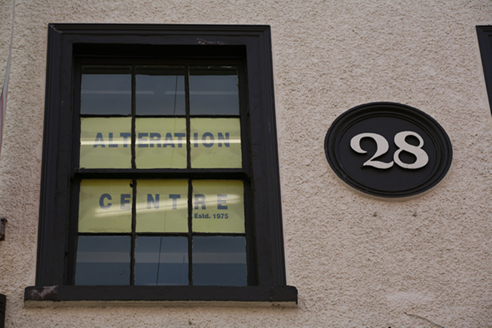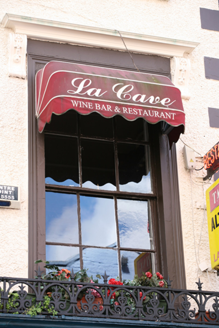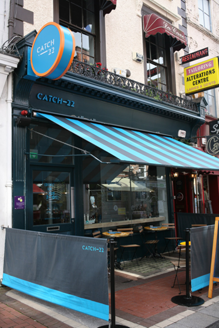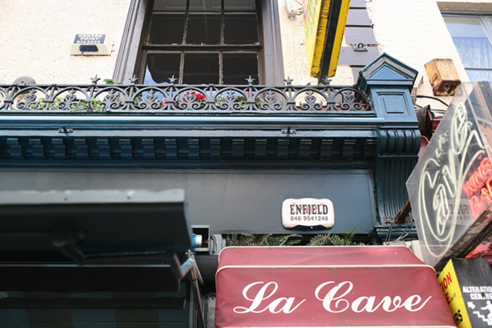Survey Data
Reg No
50920002
Rating
Regional
Categories of Special Interest
Architectural, Artistic
Original Use
House
In Use As
Restaurant
Date
1720 - 1740
Coordinates
315965, 233697
Date Recorded
22/09/2015
Date Updated
--/--/--
Description
Attached two-bay four-storey over concealed basement former townhouse, built c. 1730, with three-storey return and late nineteenth-century shopfront. Built as pair with No. 27 (50920001). Double-pile artificial slate roof, hipped to front (north), with truncated gable to rear pile (south). Large stepped brick chimneystack with clay pots to east at centre of plan and shared with neighbouring building. Roof hidden behind north parapet wall with moulded crown cornice and parapet gutters. Roughcast rendered walls with rusticated rendered quoins and yellow brick walls to rear elevation, laid in English garden wall bond. Square-headed window openings with architraves, granite sills and six-over-six timber sash windows, c. 1840, with cylinder glass and ogee horns to the first and second floors. Replacement timber casement windows to the third floor and ,masonry cornice over ,first floor windows, supported on console brackets. Largely one-over-one timber sash windows to rear (south) elevation. Timber shopfront comprising central display window flanked by two glazed timber entrance doors all surrounded by half-fluted pilasters surmounted by gabled scrolled console brackets, framing fascia with modillioned cornice and decorative cast-iron grille. Street-fronted on south-side of Anne Street South.
Appraisal
Dublin Civic Trust's 'A Survey of Gabled-Fronted Houses and Other Early Buildings of Dublin City' (2012) states 'No. 28 is a rare example of a heavily modified formerly gabled house which retains much of its interior, with its original form still being readable to the rear. The house was constructed on a site leased by Joshua Dawson in 1718 for 999 years to William Wilde, on which he was to construct “fashionable houses” within a period of seven years. Lease documentation suggests the houses - No. 27 and No. 28 - were built as a pair c. 1724-25. They are impressive examples of the gabled house type, with generous proportions and shared closet returns to the rear. No. 28 was modified c. 1840 with the removal of the front gable, building up the attic storey to the front only, and adding a new, almost pyramidal roof on top. The original rear pitch of the cruciform roof survives at the back of the house with the exception of its uppermost point, while the rear elevation has also been refaced. No. 28 is a good example of the extensive efforts made to modify gable-fronted buildings into a more fashionable idiom in the nineteenth-century, including re-fronting to the street, refacing brickwork to the rear and inserting a shop unit at ground floor level.' Casey (2005) notes that the interiors of Nos. 27-9 have good early-eighteenth century closed-string stairs with turned banisters.
